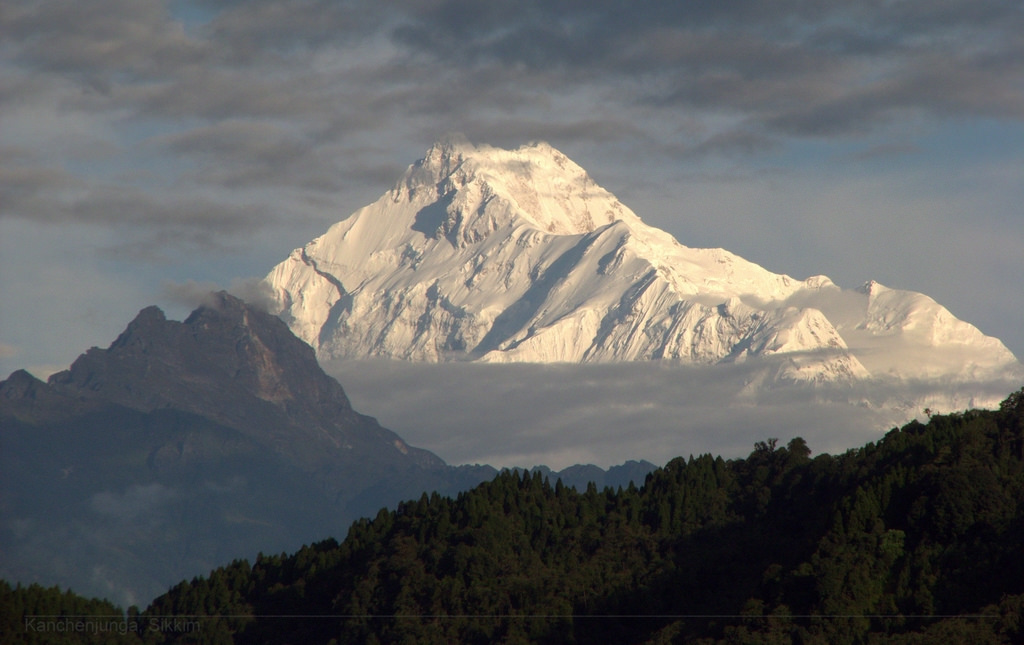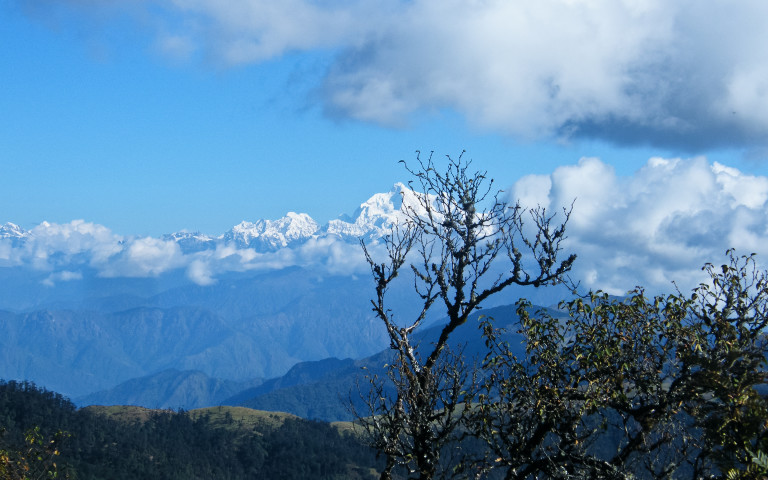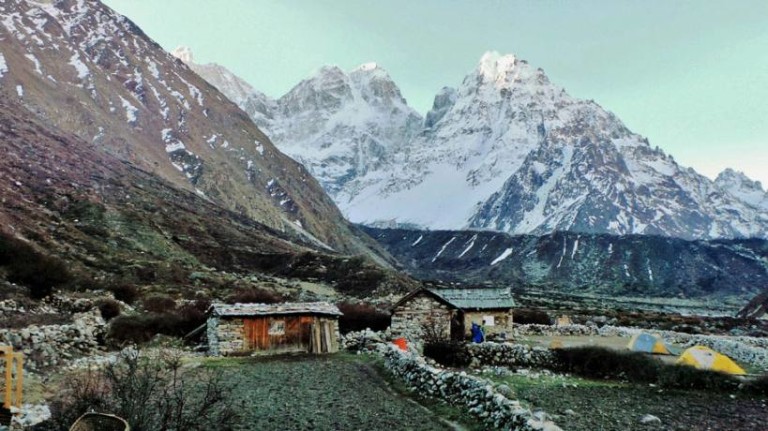- HOME
- Destination
- Adventure Activities
- About Us
- BLOGS
- CONTACT US

Kanchenjunga is the third tallest mountain in the world located in Nepal with an elevation of 8,586 meters/28,169 feet above sea level. The mountain lies in a section of the Himalayas called Kanchenjunga Himal. It is situated between Nepal and Sikkim with three of five peaks (main, central and south) directly on the border and remaining two (west and Kangbachen) in Taplejung district of Nepal.
Located in Himalaya, mountain range in Asia, Nepal is home to many tallest mountain of the world. However, the popularity is dominated by Annapurna range which consists one peak above 8,000 meters, thirteen over 7,000 meters and sixteen more over 6,000 meters.
Although Kanchenjunga is one of the tallest mountains of the world, it is a less sought-after mountain. The trails and route of Kanchenjunga are relatively challenging, and as it is situated in eastern part of Nepal which is less visited by tourist, the pace of trekkers and mountaineers are less in Kanchenjunga despite its glory. Also, the difficulty to reach out from India has made it much less explored by trekkers. So, today let us know about the least famous yet eminent peak.

Be a third tallest mountain of the world and has no facts; this is not possible. Here are some interesting facts relating to this majestic mountain.
-Kanchenjunga was assumed to be the tallest mountain of the world until 1852. Yes, you heard it correct. But with many calculations by the Great Trigonometrical Survey of India concluded that Everest, then known as Peak XV was the tallest one in the year 1849. To confirm of the calculation further verifications were done and in 1856 Kanchenjunga was placed in the third position.
-There are several alternative spelling of Kanchenjunga including Kangchenjunga, Kangchendzonga and Khangchendzonga. The local name of the mountain is Kanchinjinga meaning ‘the five treasure of high snow’ referring to its five peaks. Sikkimese pronunciation of Kanchenjunga which originates from Tibetan word has a separate word meaning Khan means ‘snow ice’, chen means ‘great,’ mdzod means ‘treasure’ and inga means ‘five.’ This majestic name has another name as per Limbu language which is Senjelungama or Seseylungma and is believed to be an adobe of omnipotent goddess Yuma Sammang.
-As per the locals, there is a belief that treasures are hidden in Kanchenjunga but will reveal to devout when the world is in peril. The treasures are salt, gold, turquoise, precious stones, invincible armor or ammunition, sacred scriptures, grain, and medicine.
-Kanchenjunga Transborder is shared by four nations Bhutan, China, Nepal and India and comprises fourteen different protected area with a total area of 6,032 km2.
-Kanchenjunga radiates four main glaciers. Zemu glacier in north-east, Talung glacier in south-east which drains to Teesta river, Yalung glacier in south-east and Kangchen glacier in north-west drains to Arun and Koshi.
-Kanchenjunga can be conquered from four different routes. Three of them are from Nepal in southwest, northwest, and northeast and one is from Sikkim. However, Sikkim route has been used only three times to this day as Indian government banned expeditions to Kanchenjunga and the route has been closed since 2000.
-There is a belief around Kanchenjunga that it is the home of a mountain deity called Dzonga or Kanchenjunga Demon, which is said to be a yeti or rakshas (Hindu mythological demon). In 1925, a British geological expedition spotted a bipedal creature which was referred as Kanchenjunga Demon by locals when they were enquired about.
-In May 25, 1955, Kanchenjunga was first climbed by Joe Brown and George Band, who were part of a British expedition. They were followed by other members of expedition the next day. The expedition started on April 18, and every member was back to the base camp by 28 May.
Kanchenjunga is one of the least explored and immaculate trails of Nepal. And it is the very reason why its pristine beauty is still intact. Kanchenjunga trekking is a pleasant and full of beautiful surprises. The trek takes you around the stunning snow-capped mountain and their breathing view, landscape and exotic view of hills and villages. Also, as the trek takes place in an eastern part of Nepal, you will get to know more about Nepali lifestyle and culture.
Kanchenjunga trek has been designed for rigid adventure lovers looking for some real challenges. It is a challenging yet worthy trek with fewer trekkers en route in complete tranquillity. You will observe the stunning view of mountains and hills, colorful and beautiful forest of rhododendron and other highland forest and quaint village of different ethnic groups. Various species of flora and fauna can be encountered as Kanchenjunga is protected area.
Kanchenjunga is a long trek which takes you to the eastern region of Nepal. Kanchenjunga trek starts from Taplejung which takes about two days from Kathmandu. You have to take a flight to Bhadrapur and take a ride to nearby town of Birtamode. From Birtamode you will easily find a means of transport to Taplejung.
The adventurous trek of Kanchenjunga begins from intensively cultivated hillsides mainly habitat by Limbu ethnicity of Nepal, towards the peak of Jannu and Khabru and the great wall of Kumbakarna, Kanchenjunga and Rathong, witnessing some of the exquisite high mountain scenery. Kanchenjunga Conservation Area is one of the attractions of the trek where you can see some major wildlife like snow leopard, red panda, and Asian black bear. The protected area also offers an excellent panoramic view of mountains like Kanchenjunga, Everest, Makalu, and Lhotse.

The villages you will encounter are rich in their tradition and rituals, and their simple remote lifestyle will give you a bigger picture of real Nepal. The wilderness in highland, quaint villages and remote lifestyle and ravishing and contrasting variety of scenery will uphold the charm of trek throughout the way. The warm-hearted and amiable people will be more than happy to include you in their tradition so, just feel free to communicate. Tongba, a fermented and famous millet drink of eastern Nepal can be an ice-breaker. You can join the locals for Tongba, and with every sip, your taste buds will be relished, and your friendship will flourish.
With verdant forest, remote villages and their lush farmland will give way to the higher and challenging route of trek. And as the altitude grows, the majestic view of mountains becomes more alluring and satisfying. Along with the snow-capped view of mountains traditional villages, monasteries, chortens, temples and prayer walls will further reward the trek. It is also believed that yeti exists in this region. With all this amazing features and beauty en route, Kanchenjunga trek will be the ultimate experience of your life.
Your email address will not be published.Required fields are marked *
You must be logged in to post a comment.
0 Comments on "Kanchenjunga: The Pride of Eastern Nepal"